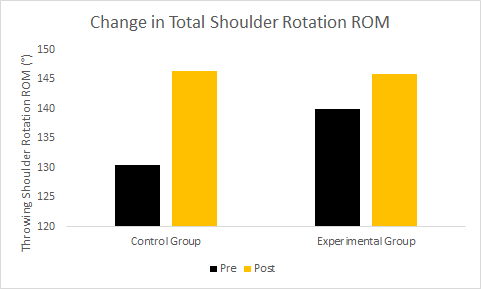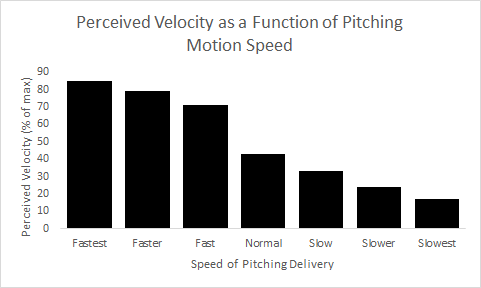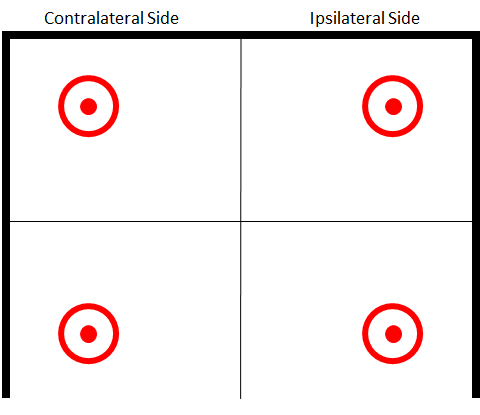Caught Looking: Articles of the Week – September 10

Influence of a Pre-throwing Protocol on Range of Motion and Strength in Baseball Athletes
Shoulder rotation range of motion and isometric strength are two very common measures used to assess movement and health in baseball players, both of which have shown to be affected by throwing training and in-season workload.
Additionally, there is reason to believe that adequate hip movement contributes to increase energy transfer from inferior to superior segments in the kinetic chain (AKA better sequencing the movement of important body segments).
Downs et al. in the Auburn University biomechanics lab looked at how shoulder rotation range of motion and isometric strength changed over a season in two different groups. The first was an intervention group that included an additional lower-body warm-up routine before their throwing protocol. The second was a control group who didn’t participate in the extra warm-up exercises.
The warm-up routine included two sets of ten glute bridge, banded hip abduction, banded hip extension, and banded deep squat exercises. These exercises were chosen based on previous research establishing a relationship between the hip, pelvis, and spine complex muscle activations and muscle activation of scapular muscles (Oliver et al. 2016,; Oliver et al. 2018a; Oliver et al. 2018b).
They found that the group of athletes who completed the pre-throwing warm-up routine lost more stride hip (front hip; left hip for a righty) external rotation but gained more external rotation isometric strength than the control group. Additionally, they maintained shoulder range of motion throughout the season better than the control group in their throwing shoulder.
These findings are interesting because:
- This is longitudinal, training-type data, which is hard to come by and can provide very applicable findings to the game
- The data suggests that doing a lower-body warm-up may have an effect on changes in throwing arm shoulder rotation over time
Experimental group with lower body warm-up gained less total ROM
More investigations would need to be completed to confirm and further describe the relationship between lower body exercises and throwing shoulder movement. More good work out of Dr. Oliver’s lab at Auburn!
Effect of Manipulating Advanced Kinematic Information on Hitting Movement Prediction, Perception, and Action
We recently published a blog about pre-pitch strategies for hitters and how pre-ball flight information is an important aspect of predicting pitch information. Takamido et al. at Nagoya University recently published an article supporting a similar conclusion but with windmill softball pitching videos. They investigated the effects of changing “advanced kinematic information” which they manipulated by adjusting the video playback speed of an actual windmill softball pitcher.
The interpretation of this data is tough due to the involved study design and the three different sub-experiments that were completed, but they’re three of the main takeaways:
- When the playback speed of the pitcher was faster (the pitcher was moving faster in the video), batters tended to predict that the ball would be moving faster when no ball flight information was presented
- This effect was still seen when the batters were able to see pitch flight–even when they watched ball flight in the video, they perceived it as moving faster when the pitcher’s motion was faster
- The error in impact timing of participants who were to take a dry swing when the ball would be crossing the plate was also affected by this change in speed of the pitching delivery
There are a few serious limitations with this study, including sample size (8 athletes) and the use of video for all aspects of visual cues (neither the pitching movement or the ball flight information were live). However, these analyses can still be used to provide more insight into the role of pre-ball flight visual information.
One additional note is that the use of video is a limitation as far as generalizing these results to live situations. Still, it is also a strength in this study design due to the heightened ability to control the independent variable. Video allowed the experimenters to control the conditions much more effectively than if it were a live scenario.
These findings support the theory (in the aforementioned blog) that a considerable amount of visual information is utilized for pitch trajectory prediction. A clear next step for furthering these results would be to complete a similar experiment with baseball pitchers in a live environment while we control some of the pre-ball flight movement of the pitcher to determine its effect on hitting performance and gaze behavior
The Effects of Target Location Upon Throwing Velocity and Accuracy in Experienced Female Handball Players
Velocity and command are both important aspects of pitching. Does the target location of a pitch affect the pitcher’s ability to do either of these? Dr. Roland van den Tillaar completed a research project with handball players investigating the effects of target location on throwing velocity and throwing accuracy. There were four targets set up in a handball net in quadrant fashion (one in the direction of each corner of the net).
Representation of the target setup for a right-handed thrower
The main findings from this analysis were that ball velocity was higher on the ipsilateral side (throwing arm-side) when compared to throws toward contralateral (glove-side) targets, and accuracy was worse when participants were throwing toward the upper, contralateral-side target (elevated glove-side target) than the other targets. Additionally, there was no trade-off between ball velocity and accuracy for any of the four targets.
These findings are potentially very important because in baseball pitching, pitchers are almost always throwing toward a specific target set-up by the catcher. Maybe pitchers can throw harder to arm-side targets and potentially have better command there. Perhaps this means that command training should be more heavily focused on glove side targets to account for the difference in difficulty locating. Regardless, these are very interesting and applicable results. This is something to look into with more command-focused throwing workouts.
For a closer look and velocity, command, and their relationship, check out our blog on the speed-accuracy trade off.
By Kyle Lindley (@kylelindley_)


Comment section